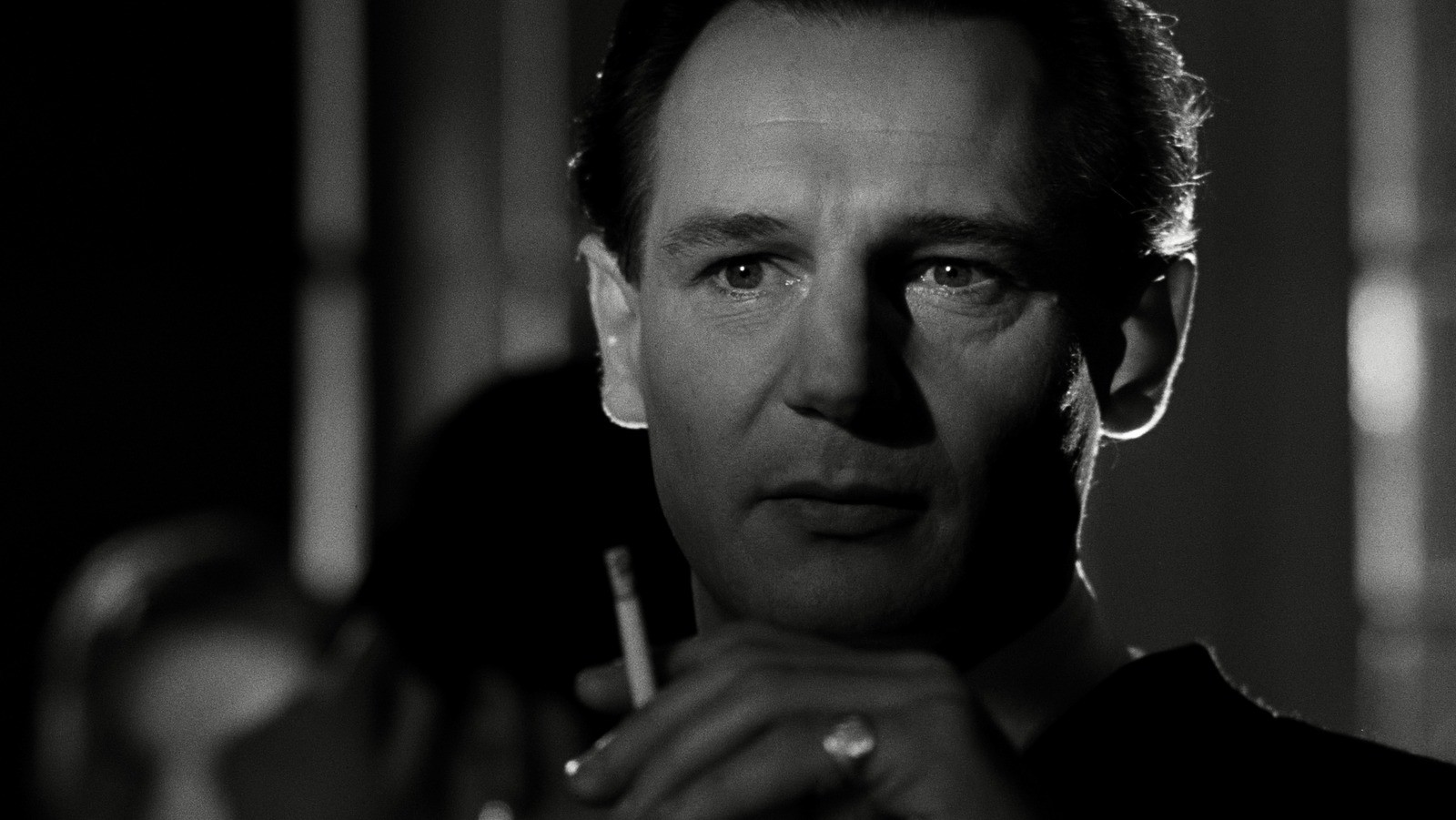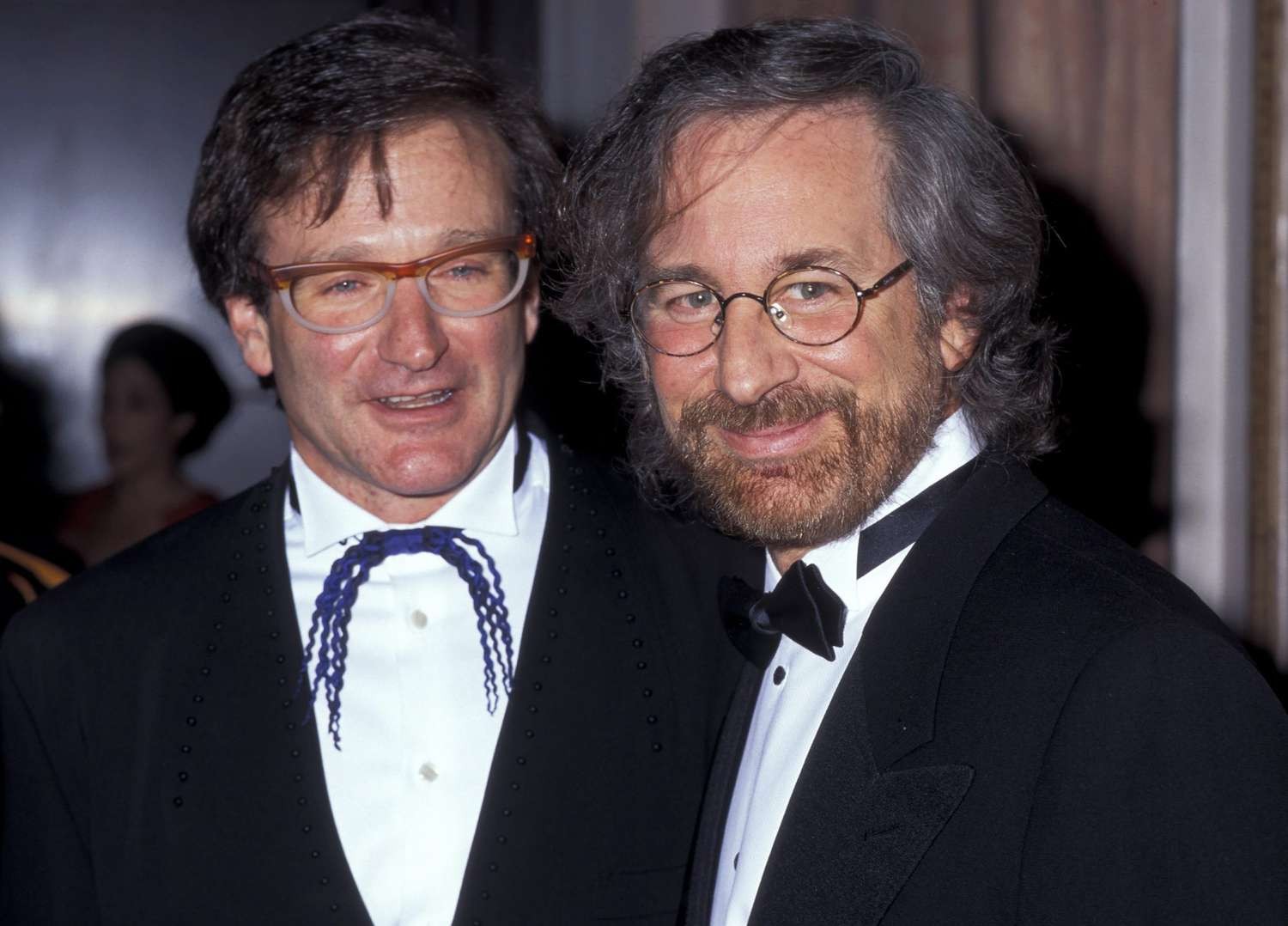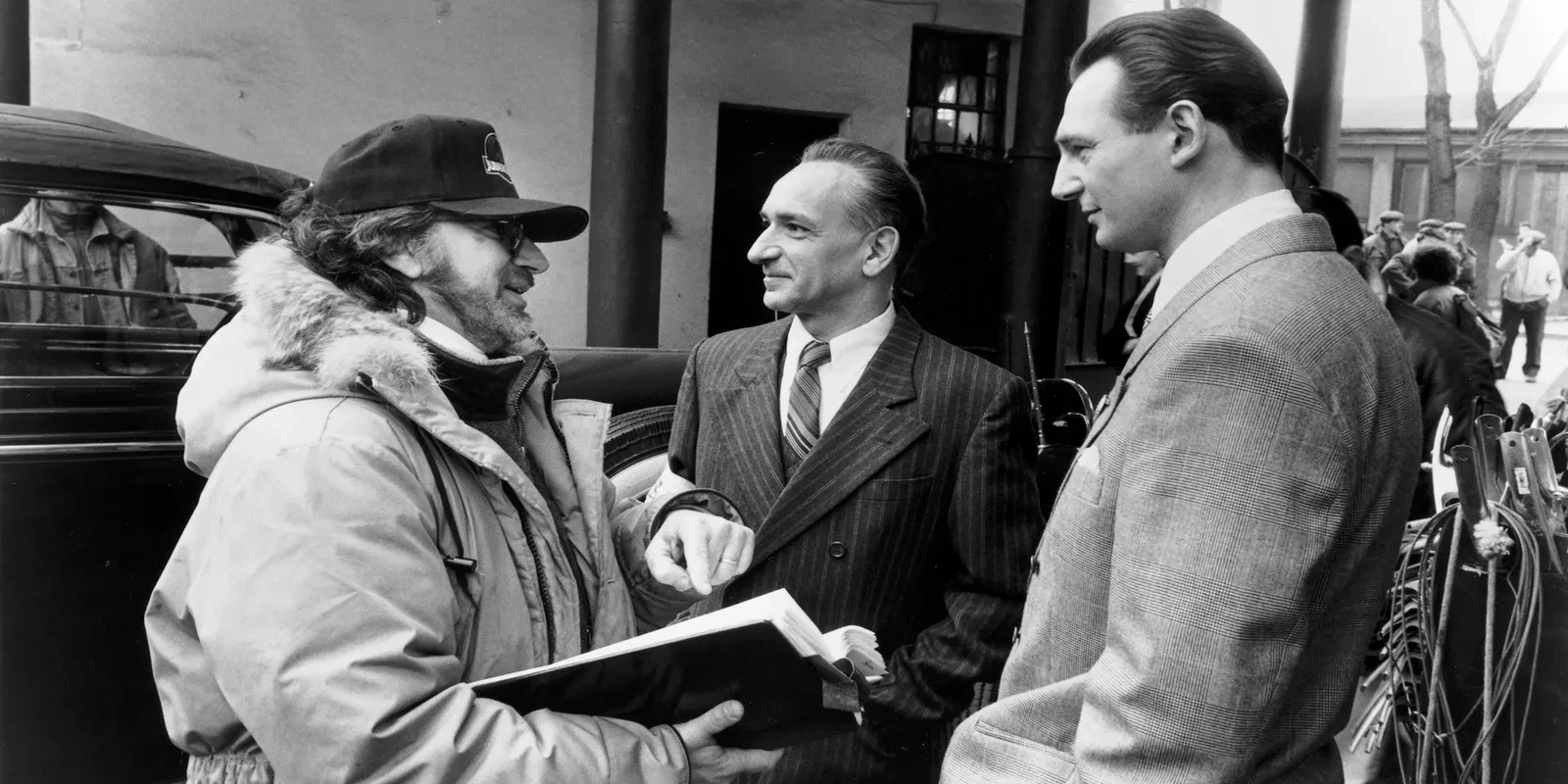Steven Spielberg is considered one of the finest filmmakers of today and his 1993 film, Schindler’s List, is a great example why. Set in the time of the Holocaust, the film focuses on the story of a German manufacturer, Oskar Schindler, who goes out of his way to save the Jews from a harrowing fate.
 Liam Neeson in Schindler’s List
Liam Neeson in Schindler’s List
Since Steven Spielberg is from the Jewish community himself and has family members who were affected by the Holocaust, making Schindler’s List was an extremely tough task for him. After all, it is one thing watching a film and a completely different thing relating to it. Steven Spielberg found his savior in the late Robin Williams, who despite not being in the film, helped a great ton in its development.
How Robin Williams Helped Steven Spielberg Finish Schindler’s List

Robin Williams and Steven Spielberg
Schindler’s List was released after Robin Williams took over the role of John Keating in Dead Poets Society, beating Liam Neeson to it. A few years later, Williams would go on to make Neeson’s Schindler’s List possible. How? By simply being there to make Steven Spielberg laugh during the tough shoot of the film.
As mentioned above, Spielberg was personally affected by the Holocaust. His father had lost about twenty relatives during the period. Spielberg himself was bullied at his high school for his beliefs. It was difficult for him to accept his heritage and therefore, Schindler’s List hit close to home.
Making the film was draining Spielberg emotionally, day by day. This is where Williams came in. He was right by the filmmaker’s side to ease his mood by making him laugh and lifting his spirits whenever they would hit a low.
As reported by IndieWire, Spielberg spoke at the 2018 Tribeca Film Festival where he revealed the weekly phone calls he would have with Williams.
“Robin knew what I was going through and once a week, Robin would call me on schedule and he would do fifteen minutes of stand-up on the phone. I would laugh hysterically because I had to release so much. The way Robin is on the telephone, he’d always hang up on the loudest, best laugh you’d give him. He’d never say goodbye, just hand up on the biggest laugh.”
Williams’ understanding of Spielberg’s situation, with whom he worked on Hook (1991), says a lot about why friends who will be right there to pick you up when you are falling are important. Thanks to Williams’ contributions, the filmmaker was able to deliver one of the best films of his career without reaching his breaking point.
Why Did Steven Spielberg Decide to Direct the Film?
 Steven Spielberg on the set of Schindler’s List
Steven Spielberg on the set of Schindler’s List
If Schindler’s List was such a difficult topic for Spielberg, why didn’t he just get another director for it? Well, he tried.
Spielberg had offered the film to Martin Scorsese before deciding that he himself should direct the project. So what changed the filmmaker’s mind? Talking to Entertainment Weekly, Spielberg stated that he offered the task to Scorsese after he realized his previous choice, journalist Kurt Luedtke could have “journalistic conflicts about not believing the story.”
However, when he gave the film to Scorsese, he realized that he missed it.
“I thought Marty would do a great job with it. He wouldn’t back down from truth or violence. But the minute I gave it to Marty, I missed it. I’d given away a chance to do something for my children and family about the Holocaust.”
Thus, the two filmmakers became a part of barter. Spielberg gave Scorsese Cape Fear and Scorsese gave back Schindler’s List. The rest is history.
News
Megan Fox Turned Down a Mammoth $17 Million Paycheck Due to Her Intense Hatred for Angelina Jolie Comparisons
Some actors like being compared to the veterans but some absolutely hate it. The latter was true for Megan Fox and Angelina Jolie for which the former…
Sylvester Stallone Exiting $789M Franchise, Letting Fast X Star Take Over after Megan Fox’s Debut? $400M Rich Star Says “Jason Statham is 80% of it”
For the most part of his career, Sylvester Stallone’s name has been attached to several franchises but it seems the actor is finally shifting away from his…
EXCLUSIVE – Machine Gun Kelly got SHOCKING blackout tattoo to prove to Megan Fox that he is 100% committed to their relationship – as insiders reveal what actress REALLY thinks about the dramatic new ink
Machine Gun Kelly’s shocking new body art is an attempt to show his girlfriend, Megan Fox, that he ‘can change for the benefit of their relationship,’ insiders have…
Megan Fox’s boyfriend Machine Gun Kelly revealed a shocking new black tattoo that required 44 needles, but what stunned fans was the sensitive image he just shared
Machine Gun Kelly has debuted his new ink on social media. The singer is known to be covered almost top-to-toe in tattoos, but has now covered many of…
Machine Gun Kelly shares heartbreaking message addressing Megan Fox’s miscarriage
Machine Gun Kelly has shared some deeply personal thoughts about his partner Megan Fox’s miscarriage in a new song. The singer grapples with the loss of his…
Controversy Erupts: Charlize Theron Faces Backlash for Comments on Afrikaans Language, Fans Defend Cultural Heritage
Charlize Theron, a renowned South African actress, recently stirred controversy with her remarks about Afrikaans, the language spoken by many in South Africa. During a media interview,…
End of content
No more pages to load










